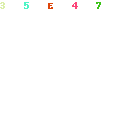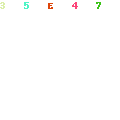This article, from Tom Shone, originally appeared in The Economist’s More Intelligent Life summer ’09 magazine issue.
Writers who drink are old hat. But what about writers who quit drinking? Tom Shone has been studying them for his new novel …
From INTELLIGENT LIFE Magazine, Summer 2009
John Cheever was most unhappy to be picked up for vagrancy by the cops. “My name is John Cheever!” he bellowed. “Are you out of your mind?” Found sharing some hooch with the down-and-outs in downtown Boston, he was promptly admitted to Smithers Alcoholism Treatment Centre on Manhattan’s East 93rd Street, where he shared a room with a failed male ballet dancer, a delicatessen owner and a smelly ex-sailor. “The ballerina is up to his neck in bubble bath reading a biography of Edith Piaf,” he noted in his journal. He spent most of his time in group therapy correcting his counsellor’s grammar. “Displaying much grandiosity and pride,” they wrote in their notes. “Very impressed with self.” Eventually he fell silent. Four weeks later he emerged, shaky, fragile and subdued. “Listen, Truman,” he told Truman Capote. “It’s the most terrible, glum place you can conceivably imagine. It’s really really, really grim. But I did come out of there sober.”
He was the first American author of his rank to do so. Much ink has been spilled on the question of why so many writers are alcoholics. Of America’s seven Nobel laureates, five were lushes—to whom we can add an equally drunk-and-disorderly line of Brits: Dylan Thomas, Malcolm Lowry, Brendan Behan, Patrick Hamilton, Philip Larkin, Kingsley Amis, all doing the conga to (in most cases) an early grave. According to Donald Goodwin in his book “Alcohol and the Writer”:
Writing involves fantasy; alcohol promotes fantasy. Writing requires self-confidence; alcohol bolsters confidence. Writing is lonely work; alcohol assuages loneliness. Writing demands intense concentration; alcohol relaxes.
There is good reason to be suspicious of this: one could as easily come up with a similar list for firefighters, or nannies, the only real difference being that writers are more vocal about it—their denial more pithily expressed. As Philip Amis said of his father’s bottle-of-whisky-a-day habit: “He was Kingsley Amis and he could drink whenever he wanted because he bought it with his money, because he was Kingsley Amis and he was so famous.”
In America William Faulkner and Scott Fitzgerald were the Paris and Britney of their day, caught in the funhouse mirror of fame, their careers a vivid tabloid mash-up of hospitalisations and electroshock therapies. “When I read Faulkner I can tell when he gets tired and does it on corn just as I used to be able to tell when Scott would hit it beginning with ‘Tender is the Night’,” said Hemingway, playing the Amy Winehouse role of denier-in-chief. He kept gloating track of his friends’ decline, all the while nervously checking out books on liver damage from the library; by the end, said George Plimpton, Hemingway’s liver protruded from his belly “like a long fat leech”.
In fact none of these authors would write much that was any good beyond the age of 40, Faulkner’s prose seizing up with sclerosis, Hemingway sinking into unbudgeable mawkishness. When Fitzgerald went public about his creative decline in Esquire, in a piece entitled “The Crack Up”—a prototype for all the misery memoirs we have today—Hemingway was disgusted, inviting him to cast his “balls into the sea—if you have any balls left”. Today, of course, “The Crack Up” would be shooting up the besteller lists, and Fitzgerald would be sat perched on Oprah’s couch talking about his struggle and his co-dependent relationship with Ernest, proudly wearing his 90-day sobriety chip, but in the 1930s, the recovery industry, then in its infancy, was regarded by most with the enthusiasm of a cat approaching a bathtub.
“AA can only help weak people because their ego is strengthened by the group,” said Fitzgerald. “I was never a joiner.” Certainly, if what you’re used to is rolling champagne bottles down Fifth Avenue beneath the light of a wanton moon or getting into the kind of barfights that make a man feel alive, truly alive, the basic facts of recovered life—the endless meetings, the rote ingestion of the sort of clichés the writer has spent his entire life avoiding—are below prosaic. Richard Yates professed to find AA meetings impossibly maudlin: “Is just functioning living at all?” he moped, claiming he could not write a single sentence sober. His fall was even more vertiginous, and emblematic of the 1950s; like Kerouac, he was to write one masterpiece (“Revolutionary Road"), then nothing.
Only the advent of rehab, in the 1960s, interrupted this fall—enforced incarceration flattering the writer’s sense of drama, the Kafkaesque me-versus-the-system fable playing out in his head. John Berryman sat in rehab looking like a “dishevelled Moses”, his shins black and blue, his liver palpitating, reciting Japanese and Greek poets and quoting Immanuel Kant. When he found out the doctors around him were serious he buckled under, declaring himself “a new man in 50 ways!” and affecting an ostentatious “religious conversion” which he proceeded to pour into a series of poems to his Higher Power (“Under new governance your majesty”). Ten days after leaving he found he needed a quick stiff one to get the creative juices flowing again and downed a quart of whisky. “Christ,” was all he could say the next morning.
Second time around he got himself a sponsor named Ken, and tried prose, writing a novel about his recovery, called “Recovery”, which goes some way to explaining why the recent spate of bestsellers on the subject have been non-fiction. Pretentious and opaque, including “a bloody philosophy of both history and Existens, almost as heavy as Tolstoy”, Berryman’s book remains an object lesson in how not to recover, as Donald Newlove has pointed out:
Read the rest of the article on The Economist’s More Intelligent Life site.


